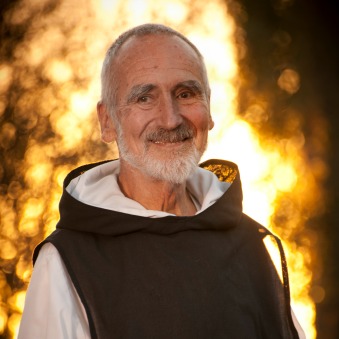Q: I understand that gratefulness is an in-depth process (as in your article on the three steps). Being grateful can -after a while- become a natural stance, or way to approach the world. My question has to do with times of extended stress, and how to live gratefully through them. Things seem to break down then. It’s much harder to stay in the present moment, to stay open etc. Any suggestions? — LJ, Minnesota
A: Your question is a timely one. These recent weeks have been a time of extended stress for many people; and the stress continues. So, what is the secret of living gratefully in times like these?
Since you referred to the three steps i suggested in my essay Awake, Aware, Alert, let me here suggest an other set of three steps. (After all, I grew up in Vienna and the three-step of waltzing is my pulse beat.)
Step 1: “Step back!” Get some distance from whatever causes your stress. We must be grateful that our inner eye has an adjustable lens. Stress within a relationship, stress from world events, stress of any kind slackens somewhat, as soon as I shift my focus from close-up to a greater distance. Immediately my field of vision widens and i realize: there is more to life than what makes me so tense. Just sitting still for a while, breathing deeply, is the form this first step often takes for me.
Step 2: “Step up!” Rise to a higher level. By doing so we show ourselves grateful for what we may call “our invisible wings.” In this month’s issue of Divine Unity’s “Daily Word” I came across a fine image for this rising above tensions: “Traveling on a plane that is moving through a storm , I look out onto a scene that is as dark as night. Then, as the plane ascends to a higher altitude and breaks through the clouds, I see daylight. The sun is shining brightly above the clouds. With an adjustment in altitude, the storm is quickly left behind.” By “stepping up” with courage we can rise above our tension to a great calm. Maybe we should call this not a step but a wing-beat: in trust we spread our wings and soar.
Step 3: “Step out!” Do something creative. Action can make tension snap. It is a way of showing gratefulness for our innate creativity. Yet, only when it springs from the inner distance and calm of steps 1 and 2, will action be truly creative. A sense of tension tends to paralyze me. I must guard against the temptation to break the tension by merely lashing out in some habitual reaction. It takes discipline to wait and to respond only when I am grounded in my quiet center. When I hit upon a response that will surprise my friends – and often myself – chances are that this will be a creative step out of tension.
What I said about the three steps of being awake, aware, and alert is true also of stepping back, stepping up, and stepping out: these steps are simple, but they are not easy; they take practice. Times of tension challenge us to practice these steps. This can make us grateful. After all, every challenge is an opportunity to go beyond what we knew we could do – an opportunity to grow.
— Your Brother David
The above exchange took place in or around 2004.



Comments are now closed on this page. We invite you to join the conversation in our new community space. We hope to see you there!